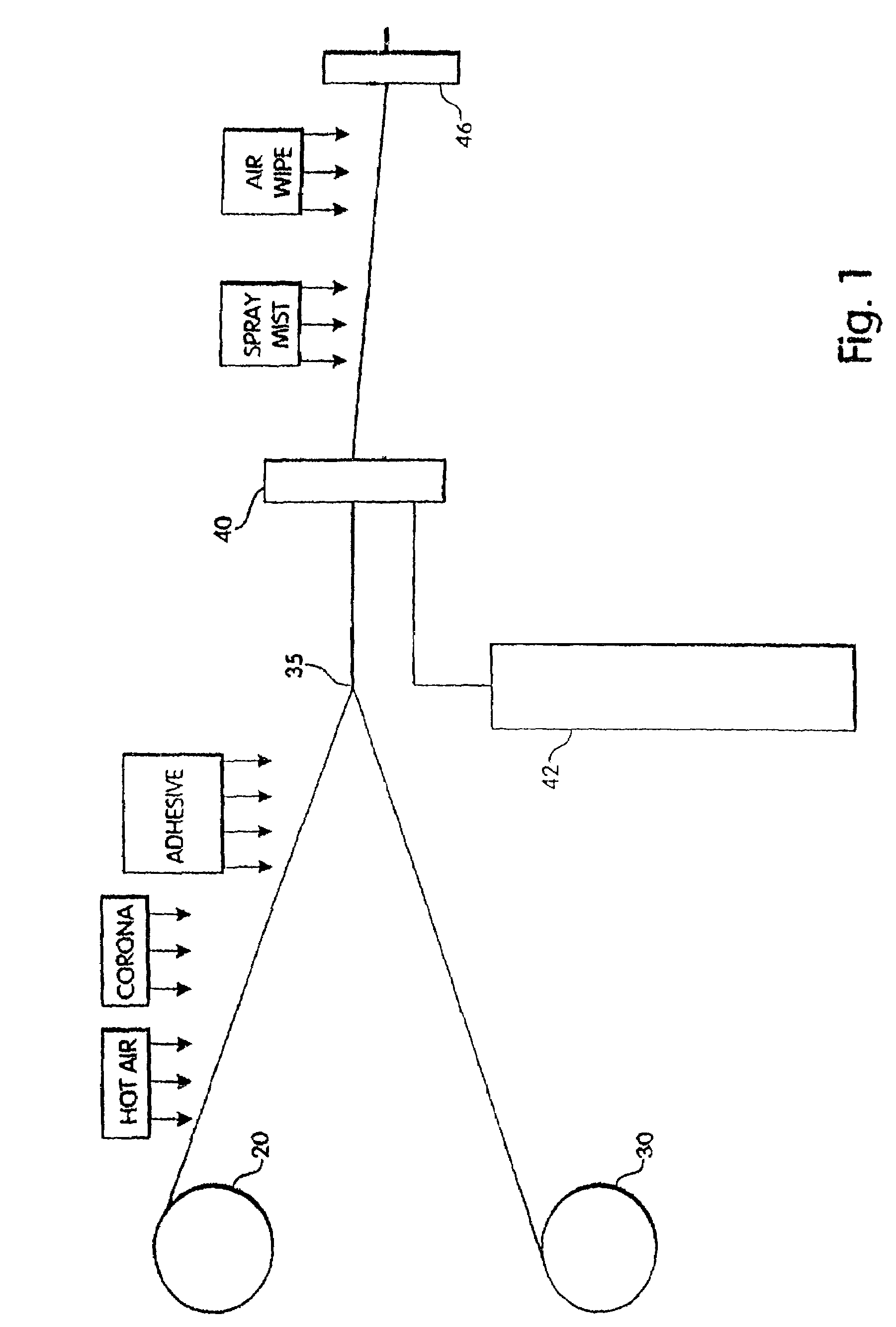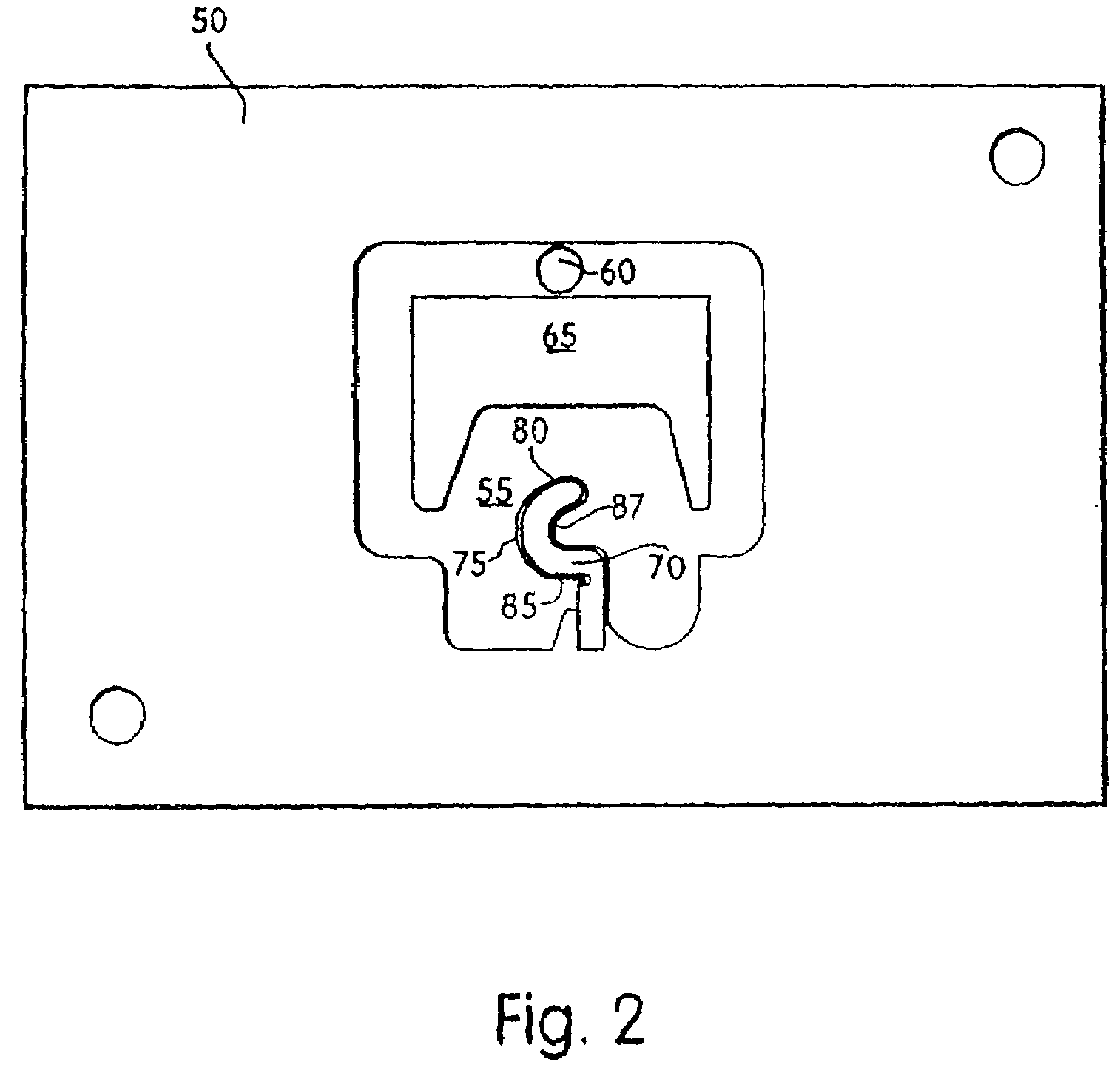Systems and methods for manufacturing reinforced weatherstrip
a technology of fabric reinforced foam and weather strip, which is applied in the field of methods, systems and apparatus for fabricating fabric reinforced foam substrate, can solve the problems of unreliable consideration or cost prohibitive prior art solutions, and achieve the effects of low friction, unprecedented performance characteristics, and quiet operation
- Summary
- Abstract
- Description
- Claims
- Application Information
AI Technical Summary
Benefits of technology
Problems solved by technology
Method used
Image
Examples
Embodiment Construction
[0043]FIG. 1 schematically illustrates the overall operation of one embodiment of an apparatus for manufacturing coated weatherstrip. The product produced in this process is a weatherseal of the type shown in FIG. 4, which includes a foam body or profile with a thin skin or coating and having bonded thereto a stiffener which is used to attach the weatherseal to a structure, such as a door or window jamb. The stiffener is supplied from a reel 20. The stiffener is first heated to approximately 120°-240° F. by a hot air blower, for example, in order to slightly soften the stiffener and to facilitate the removal of twists or bends in the stiffener as it is uncoiled and subjected to longitudinal tension. The heating also increases the temperature of the stiffener which permits a more secure bond to be formed with the adhesive and skin material in processing steps described below.
[0044]The stiffener is then subjected to a corona treatment or other surface treatment method to enhance bondi...
PUM
| Property | Measurement | Unit |
|---|---|---|
| thickness | aaaaa | aaaaa |
| depth | aaaaa | aaaaa |
| pressure | aaaaa | aaaaa |
Abstract
Description
Claims
Application Information
 Login to View More
Login to View More - R&D
- Intellectual Property
- Life Sciences
- Materials
- Tech Scout
- Unparalleled Data Quality
- Higher Quality Content
- 60% Fewer Hallucinations
Browse by: Latest US Patents, China's latest patents, Technical Efficacy Thesaurus, Application Domain, Technology Topic, Popular Technical Reports.
© 2025 PatSnap. All rights reserved.Legal|Privacy policy|Modern Slavery Act Transparency Statement|Sitemap|About US| Contact US: help@patsnap.com



